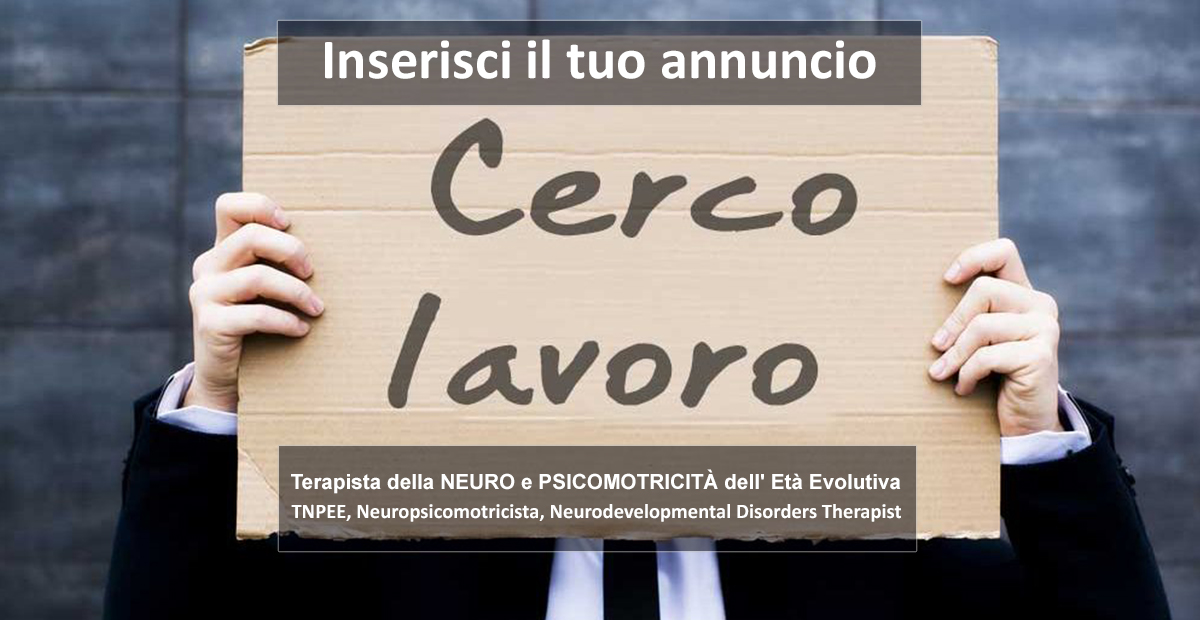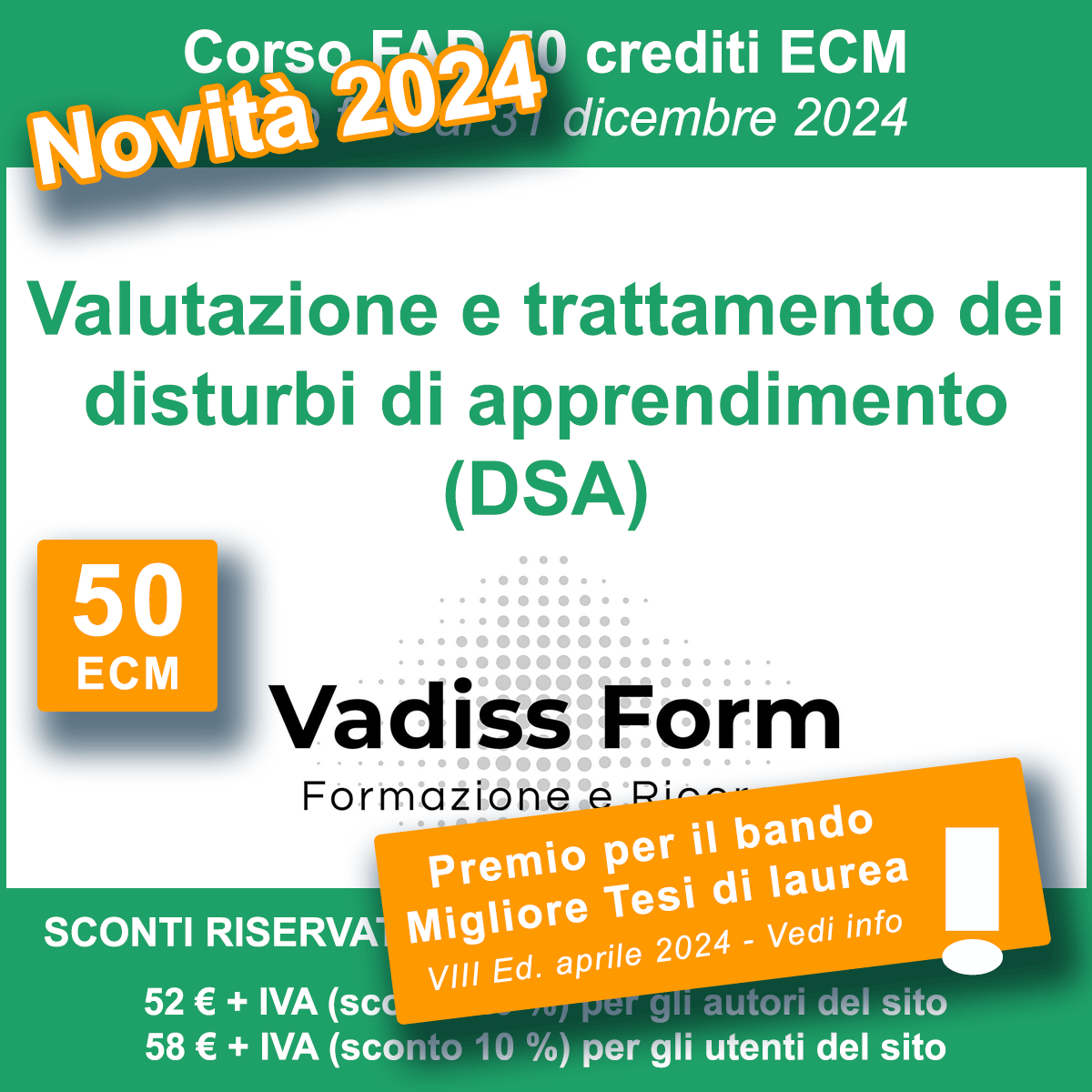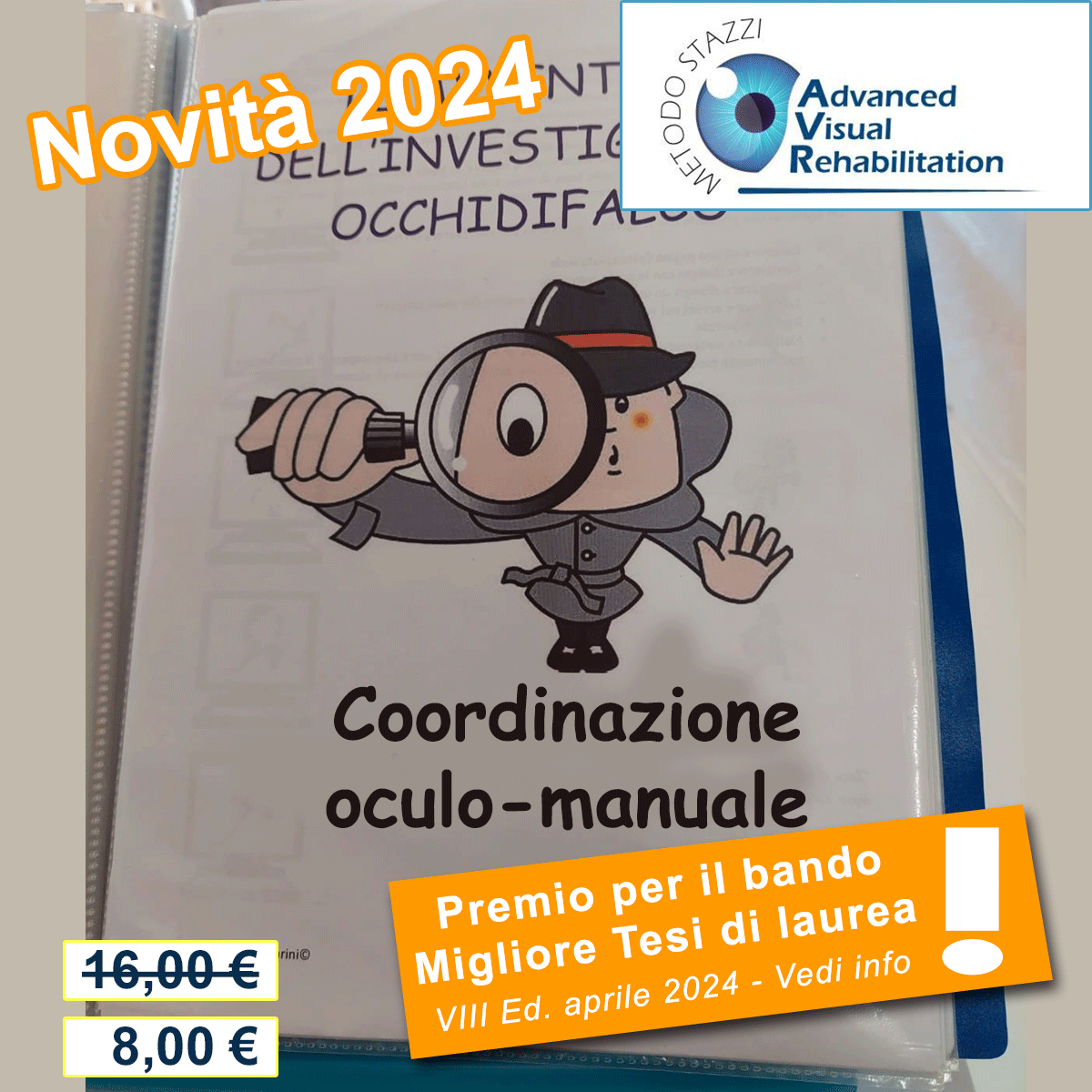BIBLIOGRAFIA - Applicazione del Metodo Terzi nei soggetti con deficit temporale
Sara Franchi
Visite: 872
- Ajyraguerra J. e Macelli D., Psychopathologie de l'enfant, Masson, 2000
- Anne-Marie Wille, Claudio Ambrosini, Manuale di terapia psicomotoria dell'età evolutiva, Cuzzolin, 2008
- Cardaci M., Mi cambierebbe 25 minuti?, Francesco Bannò Editore, Roma, 2004
- Ceriani G., Il senso del ritmo. Pregnanza e regolazione di un dispositivo fondamentale, Meltemi, 2020
- Costa E., Ritmo, movimento e conoscenza. In Corpo, i ritmi del caos, edizione SEAM, 1999
- Costa V., Fischer-Baum S., Capasso R., Miceli G., and Rapp B, Temporal stability and representational distinctiveness: Key functions of orthographic working memory, Cogn Neuropsychol. 2011, 28(5): 338–362
- Crimino G., Foschi R., Il problema e la misura del tempo in psicologia, Roma, Edizioni Studium Roma, 2004, 729-761
- D’Ortous de Mairan J.-J., Histoire de l’Académie royale des sciences:Avec les mémoires de mathématique & de physique, tirez des registres de cette Académie, Paris, Imprimerie de Du Pont, 1729
- Damasio A. R., L'errore di Cartesio. Emozione, ragione e cervello umano, Adelphi, 1995
- Decety J., Sjöholm H., Ryding E., Stenberg G., Ingvar D.H., The cerebellum participates in mental activity: tomographic measurements of regional cerebral blood flow, Brain Res,1990, 535(2):313-317
- Droit-Volet, S. & Gil, S., The emotional body and time perception, Cognition and Emotion, 2016, 30:687-699
- Durand de Bousingen, La rélaxation, Paris, Presses Universitaires De France (puf), 1969
- Fraisse P., Halberg F., Lejeune H., Michon A., Montangero J., Nuttin J., & Richelle M, Du temps biologique au temps psychologique, Parigi, Presses Universitaires de France, 1979.
- Fraisse P., Psicologia del ritmo, Armando Editore, 1996
- Fraisse P., Psychologie du temps, Presses Universitaires de France, 1957
- Gibbon J., Scalar expectancy theory and Weber's law in animal timing, 1977
- Halberg F., Chronobiology, Annual Review of Physiology, 1969, 31:675-726
- Halberg, F. Et al., Transdisciplinary unifying implications of circadian findings in the 1950s, J. Circadian Rhythms, 2003, 1, 2
- Huttin J., Fraisse P., Meili R., Motivazione, emozione e personalità, Torino Einaudi NBSE, 1974
- Johnson, L. W. & MacKay, D. G., 2019, Relations between emotion,memory encoding, and time perception, Cognition and Emotion, 33:185-196
- Kohler E, Keysers C, Umiltà MA, Fogassi L, Gallese V, Rizzolatti G., Hearing sounds, understanding actions: action representation in mirror neurons, Science, 2002, 297(5582):846-848
- Kosslyn, S., Thompson, W., Klm, I. et al.,Topographical representations of mental images in primary visual cortex, Nature, 1995, 378: 496–498
- Lake J. I., LaBar K. S. & Meck W. H., Emotional modulation of interval timing and time perception, Neuroscience & Biobehavioral Reviews, 2016, 64:403-420
- Lindenberg R., Scheef L., Supramodal language comprehension: Role of the left temporal lobe for listening and reading, Neuropsychologia, 2007, 45: 2407–2415
- Menaker M., Circadian clocks: 50 years on, Cold Spring Harb. Symp. Quant. Biol., 2007, 72:655-659
- Niessen E., Fink G. R., Weiss P. H., Apraxia, pantomime and the parietal cortex, NeuroImage Clinical, 2014, 5:42–52
- Philip L. Jackson, Eric Brunet, Andrew N. Meltzoff, Jean Decety, Empathy examined through the neural mechanisms involved in imagining how I feel versus how you feel pain, Neuropsychologia, 2006, 44:752–761
- Piaget J., La costruzione del reale nel bambino, Firenze, La Nuova Italia, 1973
- Piaget J., Lo strutturalismo, Il Saggiatore, 1994
- Piaget J., Lo sviluppo della nozione di tempo nel bambino, Firenze, La Nuova Italia, 1979
- Protopapa F., Hayashi M. J., Kulashekhar S., Van der Zwaag W., Battistella G., Murray M. M., et al., Chronotopic maps in human supplementary motor area, Plos Biology, 2019
- Rao S. M., Mayer A. R., Harrington D. L., The evolution of brain activation during temporal processing, Nature Neuroscience, 2001
- Reinberg A., Des rythmes biologiques à la chronobiologie, Gauthier- Villars, 1977
- Reinberg A., I quaderni del ponte. Dai ritmi biologici alla cronobiologia, Editore: Il Ponte, 1975
- Reinberg, Des rythmes biologiques à la chronobiologie, Gauthier- Villars, 1977
- Rizzolati G., Sinigaglia C., So quel che fai, Il cervello che agisce e i neuroni specchio, Raffaello Cortina Editore, 2006
- Sabbadini L., La disprassia in età evolutiva: criteri di valutazione ed intervento, Springer, 2005
- Sandri P., Rappresentazioni temporali e deficit intellettivo lieve. Proposte didattiche per la scuola primaria, Milano, Franco Angeli,2008
- Tallal, P., Miller, S., & Fitch, R. H., Neurobiological basis of speech: A case for the preeminence of temporal processing, Annals of the New York Academy of Sciences, 1993, 682: 27-47
- Taylor L., Lo sviluppo cognitivo, Il mulino, 2008
- Terzi I., Il metodo spazio-temporale. Basi teoriche e guida agli esercizi, Milano, Ghedini Editore, 1995
- Wallon H., Les origines du caractère chez l'enfant, 1970
| Indice |
| INTRODUZIONE |
|
PARTE PRIMA: INQUADRAMENTO TEORICO Definizione, tappe dello sviluppo, Percezione del concetto del Tempo e del Ritmo IL METODO TERZI E L’ORGANIZZAZIONE TEMPORALE PARTE SECONDA: PROGETTAZIONE E ATTUAZIONE DELLO STUDIO |
| CONCLUSIONI |
| BIBLIOGRAFIA |
| Tesi di Laurea di: Sara FRANCHI |

































